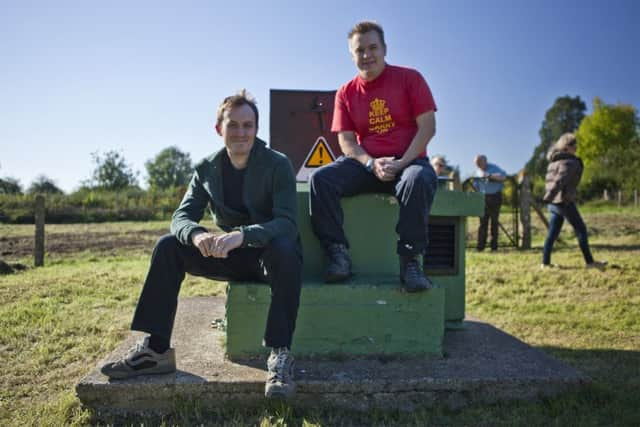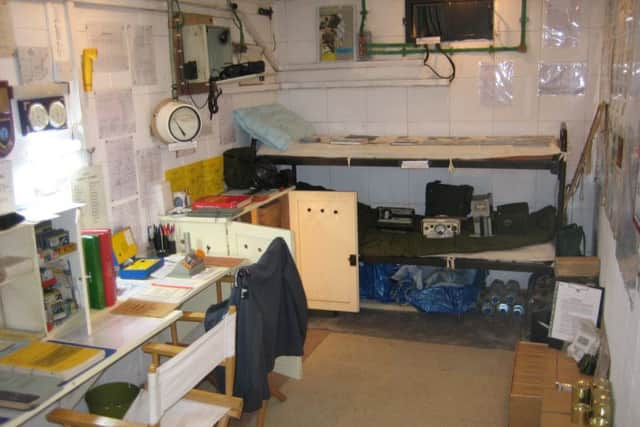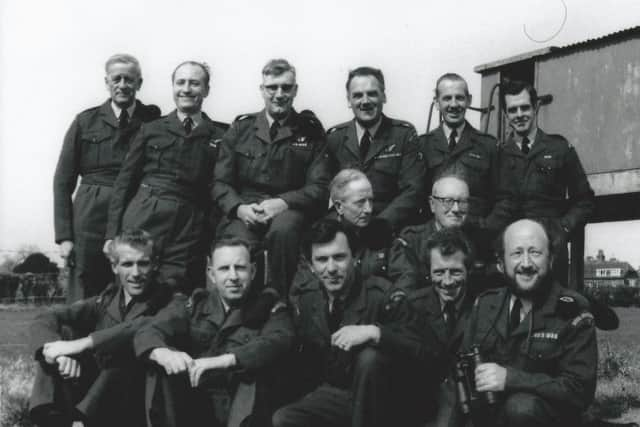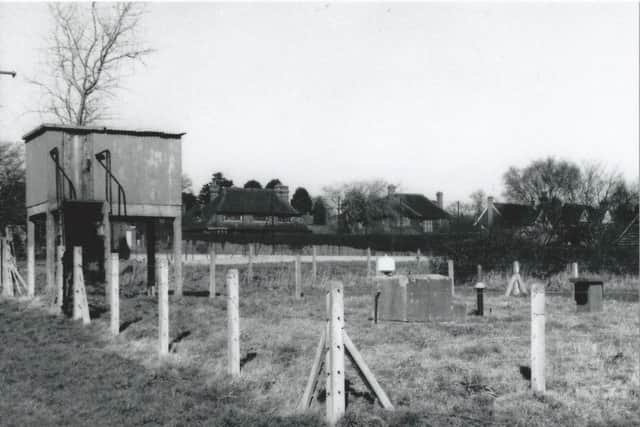Cuckfield Cold War bunker was part of nuclear fall-out plans


The Royal Observer Corps (ROC) was built near Newbury Lane in 1925 following the Zeppelin raids in the First World War, to help to identify incoming enemy aircraft.
Ed Combes, who runs open days, said: “In the 1950s the threat of nuclear attack from Soviet Russia rapidly increased with the escalation of the Cold War and the super weapons races.
Advertisement
Hide AdAdvertisement
Hide Ad“ In 1955 the government announced that steps were being taken for the ROC to give warning, and measure the effect, of a nuclear attack in event of a future war with the Soviets.”


1563 underground monitoring posts were constructed in Britain.
“The posts where grouped in clusters of three or four with a master post in each cluster.
“The master post had a VHF radio as well as the land-line based loud speaker telephone.”
Advertisement
Hide AdAdvertisement
Hide AdEd continued: “Regional headquarters were staffed by plotters and scientific officers who would predict the areas that were to be affected by nuclear fallout.


“This enabled the authorities to decide which services could remain in operation, and where to direct precious resources, manpower and advise local populations on when to seek shelter.”
To protect from fall-out of a nuclear attack the monitoring rooms were constructed 15ft underground, usually at a pre-existing WW2 observation post.
The room is 15ft by 7ft and was manned by two or three staff on a two week rotation.
Advertisement
Hide AdAdvertisement
Hide Ad“The posts were not manned 24/7 but rather there was an expectation that there would be a ‘transition to war’ phase marked by increased border and political hostilities – it would be at this point the posts would be manned,” Ed said.


“This was referred to as ‘manning up the post’.”
In peace time the post crew met weekly for training, maintenance and equipment tests.
Ed continued: “It was very much a social organisation, with big emphasis placed on summer camps, friendships and social activities.”
The majority of the staff were unpaid volunteers, with senior staff and scientific officers on salaries.
Advertisement
Hide AdAdvertisement
Hide AdVolunteers could claim expenses for travel and posts were issued ‘petty cash’ for maintenance and sundry costs.
In 1992 all Royal Observer Corp were stood down and the ROC posts were decommissioned and returned to the original landowner, with many being brought up by telecoms companies due to their elevated positions.
“Unfortunately a great number were left derelict and have now been demolished, flooded or vandalised.
“However, a number of individual posts and group controls up and down the country have been restored, either as private endeavours or as a joint venture among like-minded individuals,” Ed added.
n For more info and open days visit www.rocremembered.com